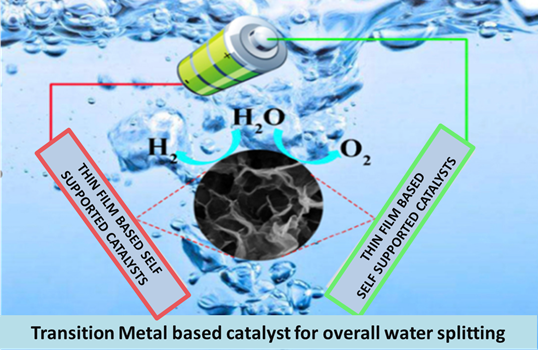
Event date:
Sep
1
2021
3:00 pm
Transition metal-based multilayer electrocatalyst for water splitting
Supervisor
Dr. Habib Ur Rehman
Student
Aleena Tahir
Venue
Zoom Meetings (Online)
Event
PhD Synopsis defense
Abstract
The consumption and demand of energy is predicted to be doubled in coming 50 years and meanwhile the energy cost is also expected to rise significantly. Fossil fuels, currently the leading source of energy, subsidize a lot of CO2 to the environment causing many environmental issues including greenhouse effect. To address these challenges, there is a dire need to develop alternative and renewable resources of energy. Water, being a renewable source, is a promising candidate in this regard because of its ability for the production of H2 (HER) and O2 (OER). OER is the 4eˉ multistep process with a demand of 240-600 mV extra energy, which makes it more sluggish kinetically. The intermediates formation during OER, oxophilicity of metal with O, less number of active sites, chemical transformation, complex experimental setup and stability are major issues toward catalytic efficiency. Precious metals Ru and Ir have been considered as benchmark catalyst for OER but their scarcity and cost-effectiveness need to replace them with non-precious to fulfil all shortcomings which is itself a big challenge. Whereas many of the recently developed, transition metal based OER electrocatalysts, particularly those with optimized mass loadings and micro/nanostructures, have been revealed to show better apparent catalytic activity per geometric surface area of the electrode than precious metal based electrocatalysts. Few of them have been established to show intrinsic catalytic activity per catalyst active surface area matching or outperforming that of the precious metal-based electrocatalysts. Besides the motivation behind addressing the activity issue, it is also equally important to fabricate efficient OER electrodes with some other preferable properties, such as low cost, high stability and good corrosion resistance in operating environments. However, it is still a difficult task to find suitable electrodes possessing all the above merits but still we tried to synthesize electrocatalyst Co@Ni foam (NF), Fe@NF and CoFe@NF through facile, scalable, easy and inexpensive electrodeposition technique. For this catalyst we got 330mV, 290mV, 270mV for OER and 160mV 263mV 204mV for HER activity. We finally electrodeposited NiCoFe@NF through layer-by-layer electrodeposition as bifunctional electrocatalyst with excellent results for OER with 220mV overpotential and 97mV for HER. Results obtained till now are comparable with literature. The characterizations include SEM, TEM, XPS complete electrochemical evaluation (CV, LSV, EIS, TAFEL PLOT, EACSA, faradic efficiency) elemental mapping and XRD.
Zoom Link: https://lums-edu-pk.zoom.us/j/98794406546?pwd=ME8wZnRIZWt1M2tyNlByZHI2MndUdz09
Meeting ID: 987 9440 6546
Passcode: 146737

